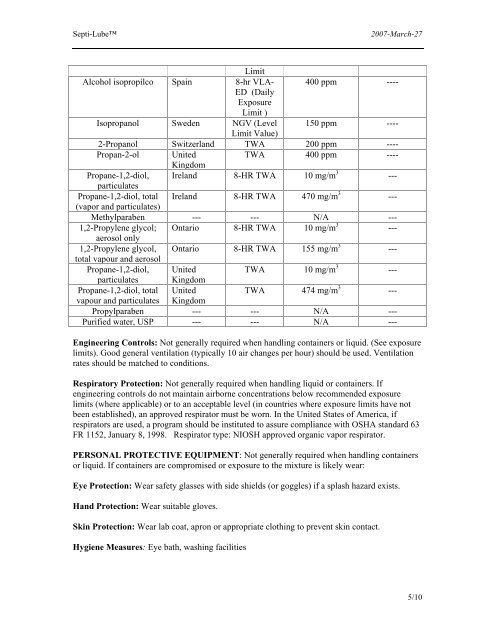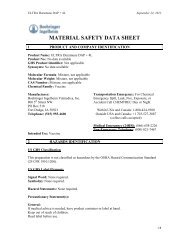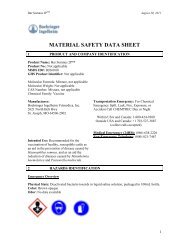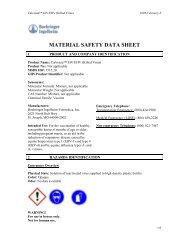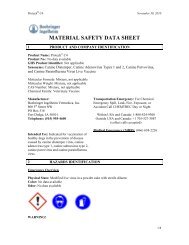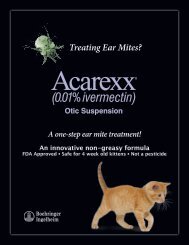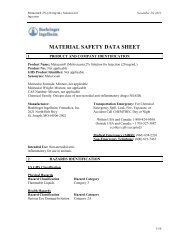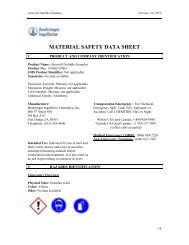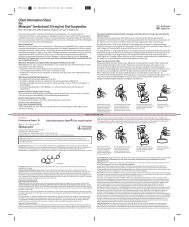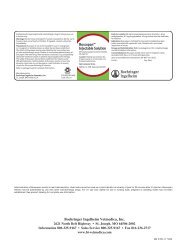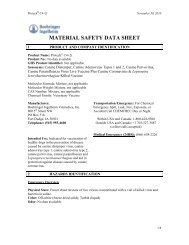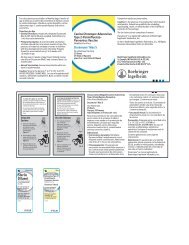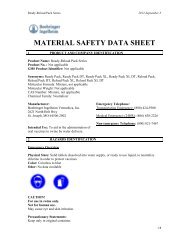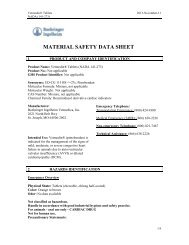practice. Fire-fighting: Use water spray, dry chemical - Boehringer ...
practice. Fire-fighting: Use water spray, dry chemical - Boehringer ...
practice. Fire-fighting: Use water spray, dry chemical - Boehringer ...
Create successful ePaper yourself
Turn your PDF publications into a flip-book with our unique Google optimized e-Paper software.
Septi-Lube2007-March-27LimitAlcohol isopropílco Spain 8-hr VLA- 400 ppm ----ED (DailyExposureLimit )Isopropanol Sweden NGV (Level 150 ppm ----Limit Value)2-Propanol Switzerland TWA 200 ppm ----Propan-2-ol UnitedTWA 400 ppm ----KingdomPropane-1,2-diol, Ireland 8-HR TWA 10 mg/m 3 ---particulatesPropane-1,2-diol, total Ireland 8-HR TWA 470 mg/m 3 ---(vapor and particulates)Methylparaben --- --- N/A ---1,2-Propylene glycol; Ontario 8-HR TWA 10 mg/m 3 ---aerosol only1,2-Propylene glycol, Ontario 8-HR TWA 155 mg/m 3 ---total vapour and aerosolPropane-1,2-diol, UnitedTWA 10 mg/m 3 ---particulates KingdomPropane-1,2-diol, total UnitedTWA 474 mg/m 3 ---vapour and particulates KingdomPropylparaben --- --- N/A ---Purified <strong>water</strong>, USP --- --- N/A ---Engineering Controls: Not generally required when handling containers or liquid. (See exposurelimits). Good general ventilation (typically 10 air changes per hour) should be used. Ventilationrates should be matched to conditions.Respiratory Protection: Not generally required when handling liquid or containers. Ifengineering controls do not maintain airborne concentrations below recommended exposurelimits (where applicable) or to an acceptable level (in countries where exposure limits have notbeen established), an approved respirator must be worn. In the United States of America, ifrespirators are used, a program should be instituted to assure compliance with OSHA standard 63FR 1152, January 8, 1998. Respirator type: NIOSH approved organic vapor respirator.PERSONAL PROTECTIVE EQUIPMENT: Not generally required when handling containersor liquid. If containers are compromised or exposure to the mixture is likely wear:Eye Protection: Wear safety glasses with side shields (or goggles) if a splash hazard exists.Hand Protection: Wear suitable gloves.Skin Protection: Wear lab coat, apron or appropriate clothing to prevent skin contact.Hygiene Measures: Eye bath, washing facilities5/10


